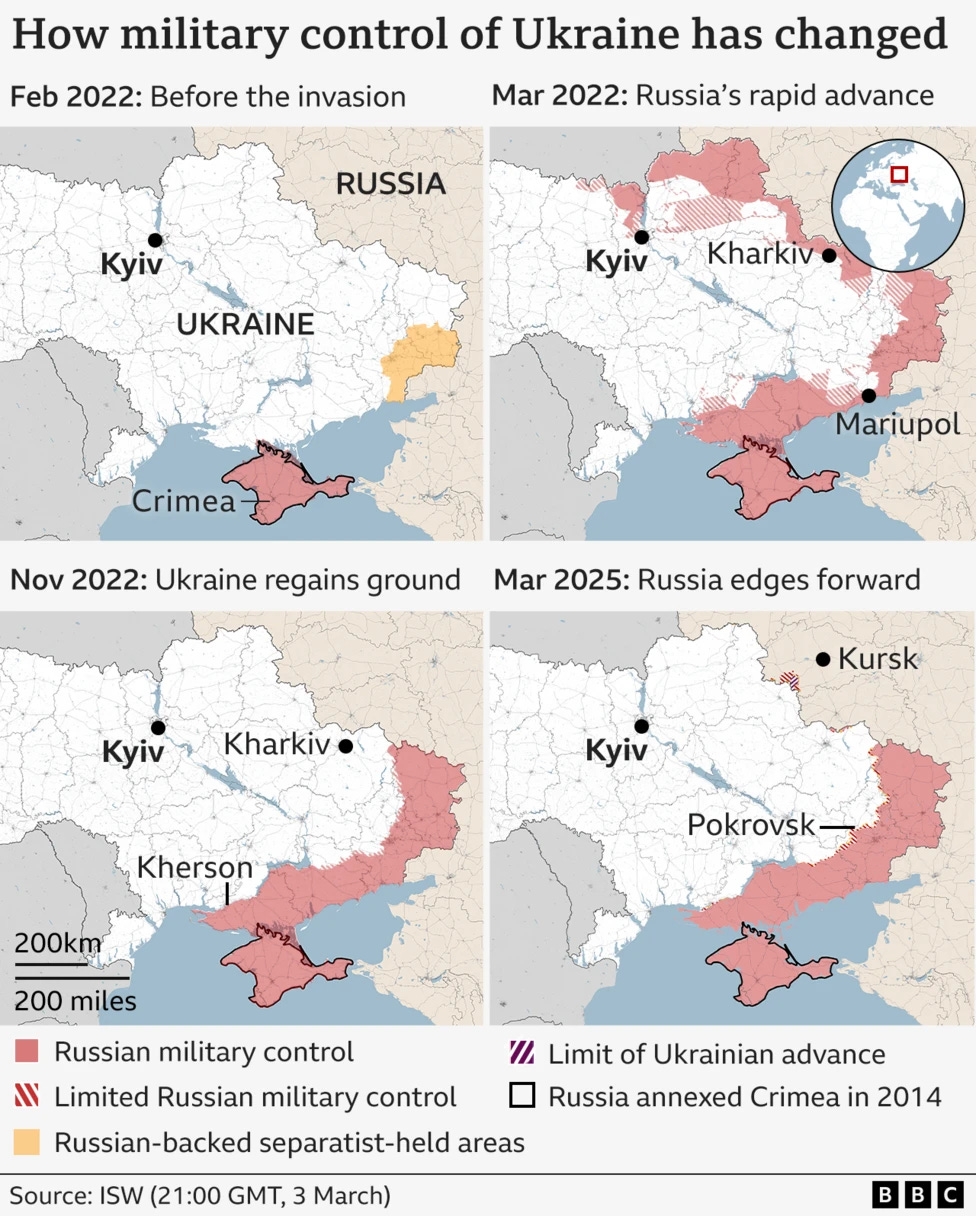Ukraine: What Does a Good Deal Look Like?
As predicted, following last week’s bust-up in the Oval Office, President Zelensky has struck a conciliatory tone and will be travelling to Saudi Arabia next week to discuss peace plans with a US delegation.
This is the result of many developments, including Trump freezing both military and intelligence support for Ukraine in an effort to force Zelensky to the negotiating table. He went further still, with US officials apparently holding meetings with Zelensky’s main rivals, former Ukrainian President Petro Poroshenko, former Ukrainian Prime Minister Yulia Tymoshenko, and Ukraine’s current ambassador to the UK and former head of its Armed Forces, Valerii Zaluzhny. According to reports, all of them predictably rejected the idea of holding elections while the war is ongoing - they all lag behind Zelensky in the polls, and much more importantly, it’s kind of difficult to have an election while millions of your citizens are refugees or on the front line, and the country is being bombed on a daily basis.
The MAGA talking points about Zelensky being a “dictator” and calls for an immediate election are just that: talking points designed to put pressure on the Ukrainian President to come to the negotiating table. Frustrating as this barrage of lies about Ukraine and its leaders is (and Douglas Murray lays them out brilliantly in this important and courageous article), what ultimately matters is whether this conflict can be ended on terms that make the brave sacrifice of the Ukrainian people worth it.
So what would a “good” deal for Ukraine look like?
Whether an agreement is good or not is a reflection, first and foremost, of the reality on the ground. You might feel ripped off if you pay an extra $20 for dinner, but if on your way home from the restaurant a mugger pulls a gun on you, handing over the entire contents of your wallet in exchange for your life will seem like a great deal.
After fighting courageously for over 3 years, the Ukrainians are not going to make any more forward progress. Even if they could, the current US administration will simply not provide the military hardware they need, and the Europeans can’t do so even if they wanted to. You may like or dislike this, but reality is reality.
It’s also true that the Ukrainians have inflicted heavy casualties on their Russian invaders, and Russia’s desire to keep fighting is waning. Vladimir Putin has little incentive to keep the fighting going if a peace deal that allows him to claim victory is done.
This is what the map on the ground looks like today and how it has evolved over time:
As I said only days after the conflict started, the be-all and end-all for Ukraine is not territory. Crimea was lost in 2014, and much of the Donbass is today a barren, desolate wasteland whose entire male population has been decimated after being forcibly enlisted into the Russian Army and sent to their deaths in what the soldiers euphemistically call “meat assaults”.
Even if Russia retains all the land it currently occupies, this would not be a strategic defeat for Ukraine. What matters is one thing and one thing only: Ukraine’s long term sovereignty and independence. This is what all the disagreements are really about.
Britain and France, as well as other European nations, will likely be willing to commit peacekeeping troops with a US backstop to make sure that Russia does not invade again down the line. So far, the Russians have claimed that this is not acceptable, and Russia’s Foreign Minister Sergey Lavrov claimed the presence of Western troops would "inevitably lead to an extremely dangerous escalation".
This is likely why President Trump has attempted to secure a ceasefire without providing the security guarantees that Ukraine is insisting on, arguing that a mineral deal which creates a US commitment to Ukraine is enough, particularly given that “Putin has never reneged on a deal” with Trump.
My view is that any agreement that fails to create a physical barrier between Ukraine and Russia would be a bad deal for Ukraine AND for the world for a number of reasons:



